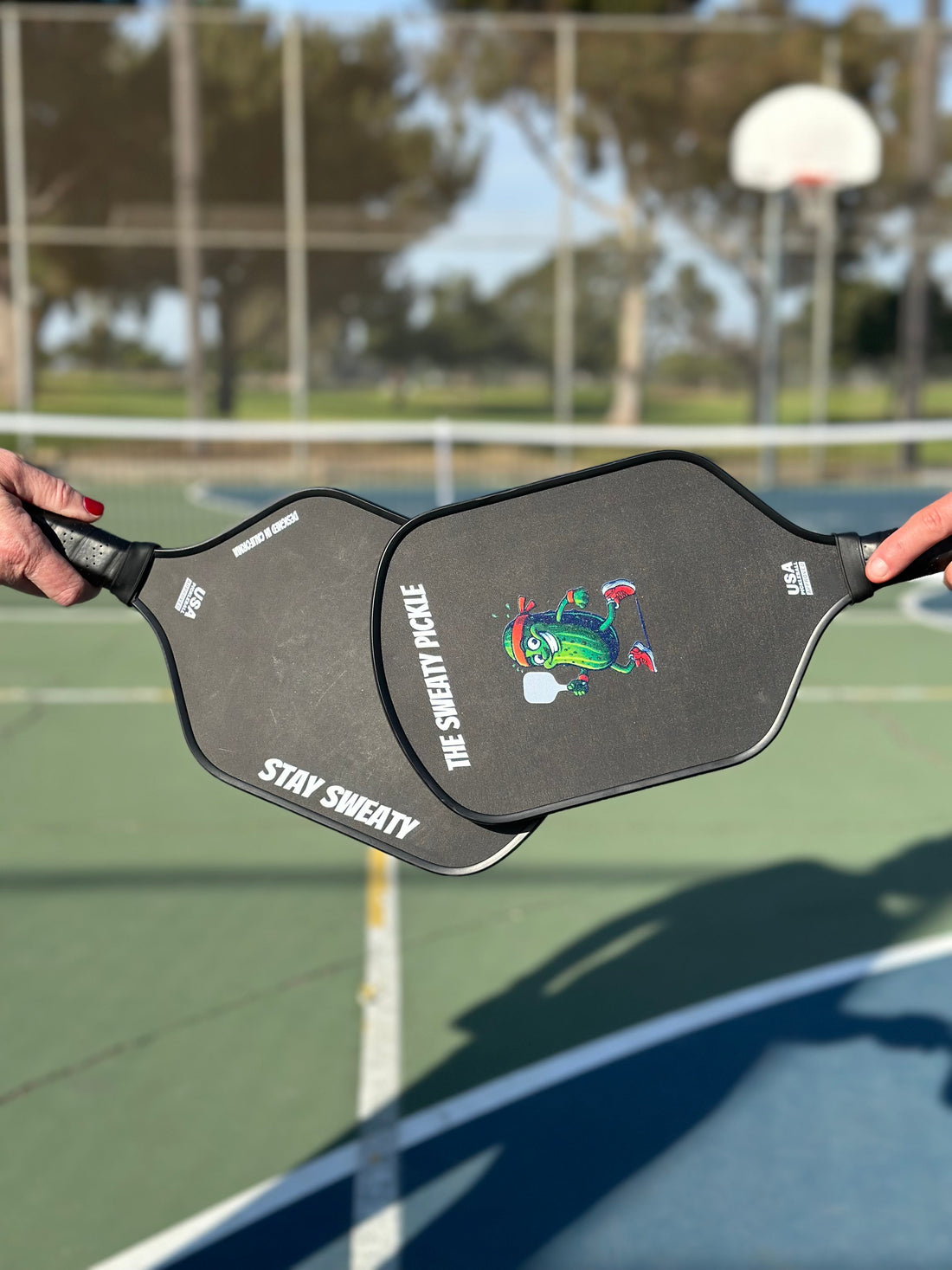
Pickleball Play and Rules
Introduction: Why Everyone is Talking About Pickleball
You’ve heard the hype, seen the courts popping up everywhere, and maybe even caught your neighbors shouting “kitchen!” at each other.
Yep, pickleball is taking over.
Whether you’re completely new or looking to fine-tune your skills, understanding pickleball’s rules and gameplay is the key to having fun and let’s be real, winning more games.
Let’s break it down, step by step.
How to Play Pickleball: A Simple Breakdown
Pickleball is a fast-paced, social game that combines elements of tennis, ping pong, and badminton. The goal? Hit the ball over the net and win points—without breaking the rules.
1. The Court & Setup
Pickleball is played on a badminton-sized court (20 x 44 feet) with a net slightly lower than in tennis. You can play:
✔️ Singles (1v1) – A game of endurance and skill
✔️ Doubles (2v2) – More strategy, less running
Fun Fact: If you’ve ever played on a tennis court, you can actually set up four pickleball courts in that same space!
The Basic Rules of Pickleball
Alright, here’s where things get interesting. Pickleball rules are simple—but they have a few quirky details you’ll want to remember.
1. The Serve Rules: No Smashing Allowed
Serving in pickleball is underhand only, and you have to follow these rules:
✔️ Hit below your waist (no overhead smashes)
✔️ Stand behind the baseline when serving
✔️ Serve diagonally across the court
✔️ One attempt only—unless the ball hits the net and lands in (let serve), then you retry
Pro Tip: A great serve isn’t about power—it’s about placement. Aim deep into your opponent’s court to push them back.
2. The Two-Bounce Rule (Don’t Rush the Net Too Soon!)
Before you can start smashing volleys, the ball must bounce once on each side after the serve.
✔️ The receiver must let the serve bounce
✔️ The server must let the return bounce
✔️ After that—volleys are fair game!
This rule prevents crazy serve-and-smash plays and keeps rallies going.
3. The Kitchen Rule: Stay Out (Unless You Have To)
Ah, the legendary kitchen—or, in official terms, the Non-Volley Zone (NVZ).
✔️ The kitchen is the 7-foot area near the net
✔️ No volleys allowed if you’re touching it (your feet must be behind the line)
✔️ You can step in if the ball bounces first
Real Talk: This is where beginners mess up all the time. You step in, hit a shot, and forget to get back—BOOM. Fault. Stay out unless you’re going for a soft drop shot.
4. Scoring in Pickleball: Why Is It So Confusing?
If you’ve ever been in a pickleball game and heard someone yell "8-4-2!", you might have wondered what language they’re speaking.
Here’s how scoring works:
✔️ Only the serving team can score points
✔️ Games are typically played to 11 points (win by 2). Sometimes 15 or 21 in tournaments.
✔️ In doubles, the score is called as:
- Your score - Opponent’s score - Server number (1 or 2)
✔️ If you lose a point in doubles, the serve switches to your partner
First Serve Difference: If you're serving first in a game, you're always Server #2, so the first score will be 0-0-2.
For a more in depth guide and exact rules, check out the official USA Pickleball Website to learn more: https://usapickleball.org/what-is-pickleball/official-rules/rules-summary/
Strategies to Win More Pickleball Games
Now that you know the rules, let’s talk strategy—because the best pickleball players aren’t just following the rules, they’re using them to their advantage.
1. Master the “Third Shot Drop”
After the serve and return, the third shot is one of the most important. A great third shot should be a soft drop into the kitchen—forcing your opponents to move forward and preventing them from smashing the ball back.
✔️ This puts you in control of the rally
✔️ It’s better than just hitting a hard shot that gets smashed back at you
✔️ Works best when your team moves forward right after
2. Stay at the Net (But Not Too Close)
In pickleball, most points are won at the net. So, the goal is to get up to the kitchen line as soon as possible—but not so close that you can’t react to a lob.
There is a consequence to standing in the middle and that is your opponents will hit the ball at your feet, creating a very difficult to return for you. So make sure to move up!
Pro Tip: If you find yourself stuck at the baseline, work your way forward gradually instead of running up all at once.
3. Use Dinks to Set Up Attacks
Dinking is an essential part of high-level pickleball. It’s when you hit soft, controlled shots into the kitchen, forcing your opponent into a low, awkward return.
✔️ Low dinks = fewer attack opportunities for your opponent
✔️ Patience wins—wait for the perfect shot to attack
✔️ Dinking isn’t just defensive—it’s strategic
Real Talk: New players often hit too hard during kitchen battles. Be patient, place your shots, and wait for the opening.
Final Thoughts: Ready to Play? Let’s Go!
If you’ve been hesitant to try pickleball, now is the time to grab a paddle and hit the courts.
👉 Looking for a great paddle? Check out The Sweaty Pickle Paddle and start playing today!
